
Kissama National Park: Angola's Untamed Wilderness
Discover Kissama National Park in Angola, a revived sanctuary teeming with wildlife, stunning landscapes, and rich history. Ideal for safaris and nature getaways.
Kissama National Park, located just south of Luanda in Angola, is a treasure trove of natural beauty. The park spans over 9,600 square kilometers and offers a diverse landscape that includes grasslands, savannas, and dense forests. It is home to a wide range of wildlife, including elephants, giraffes, zebras, and various bird species. The park is also bordered by the Kwanza River, which adds to its stunning scenery. One of the most captivating aspects of Kissama National Park is its history. Once nearly depleted of wildlife due to civil war, the park has made a remarkable recovery thanks to dedicated conservation efforts. Today, tourists can enjoy guided safaris and boat tours that provide an up-close look at the park's flourishing ecosystems. For those looking to stay overnight, the park offers several accommodation options, ranging from rustic lodges to more luxurious tented camps. These lodgings provide a perfect base for exploring the park and enjoying its breathtaking sunsets. Whether you're a wildlife enthusiast or simply looking to disconnect from the hustle and bustle of city life, Kissama National Park is a must-visit destination that promises an unforgettable experience.
Local tips in Kissama National Park
- Book guided tours in advance to secure your spot and gain expert insights into the park's wildlife and history.
- Visit during the dry season (May to October) for the best wildlife viewing opportunities.
- Bring binoculars and a good camera for capturing the park's diverse bird species and scenic landscapes.
- Wear light, breathable clothing and sturdy walking shoes for comfort during safaris and tours.
- Stay hydrated and use insect repellent to protect against mosquitoes and other insects.
Kissama National Park: Angola's Untamed Wilderness
Kissama National Park, located just south of Luanda in Angola, is a treasure trove of natural beauty. The park spans over 9,600 square kilometers and offers a diverse landscape that includes grasslands, savannas, and dense forests. It is home to a wide range of wildlife, including elephants, giraffes, zebras, and various bird species. The park is also bordered by the Kwanza River, which adds to its stunning scenery. One of the most captivating aspects of Kissama National Park is its history. Once nearly depleted of wildlife due to civil war, the park has made a remarkable recovery thanks to dedicated conservation efforts. Today, tourists can enjoy guided safaris and boat tours that provide an up-close look at the park's flourishing ecosystems. For those looking to stay overnight, the park offers several accommodation options, ranging from rustic lodges to more luxurious tented camps. These lodgings provide a perfect base for exploring the park and enjoying its breathtaking sunsets. Whether you're a wildlife enthusiast or simply looking to disconnect from the hustle and bustle of city life, Kissama National Park is a must-visit destination that promises an unforgettable experience.
When is the best time to go to Kissama National Park?
Unmissable attractions to see
Fortaleza de São Miguel
Uncover the rich history and stunning views at Fortaleza de São Miguel, a must-visit landmark in Luanda, Angola.
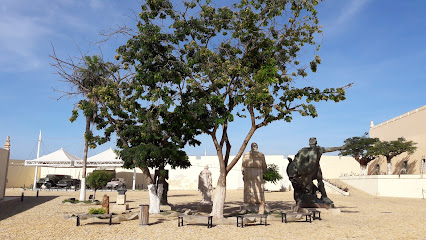
Viewpoint of the Moon
Discover the Viewpoint of the Moon in Belas, a breathtaking destination for panoramic views and serene nature experiences.
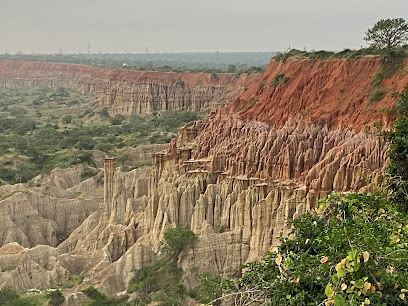
National Slavery Museum
Discover the profound history of the transatlantic slave trade at the National Slavery Museum in Belas, a crucial visit for all travelers to Angola.
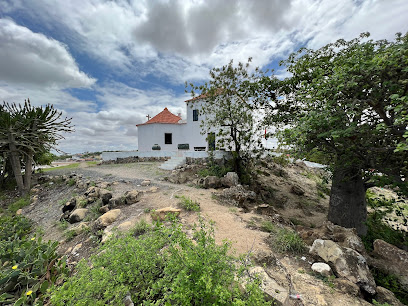
Parque da Quissama
Experience the natural beauty and tranquility of Parque da Quissama, a premier nature preserve in Angola, perfect for outdoor enthusiasts and wildlife lovers alike.
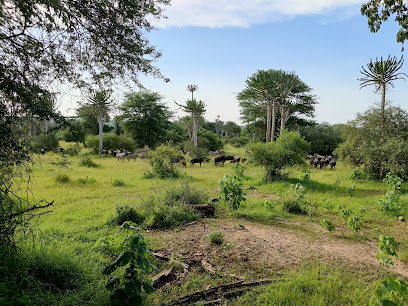
Kissama National Park Gate
Explore the diverse ecosystems and wildlife of Kissama National Park, a gateway to Angola's natural beauty and conservation efforts.

Local das peixeiras
Experience the authentic flavors of Angola at Local das Peixeiras, where fresh seafood meets vibrant local culture in Ramiros.

Grutas de Shoel
Explore Grutas de Shoel, a captivating natural wonder in Angola, known for its stunning caves and rich biodiversity, perfect for nature lovers and adventurers.

Base do Longa-Projecto Kitabanga
Explore the stunning landscapes and rich culture at Base do Longa-Projecto Kitabanga in Kapolo, a must-visit tourist attraction in Angola.
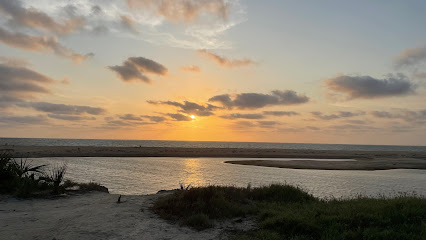
Parque de Diversão - Quarteirão U
Explore the lush landscapes of Parque de Diversão - Quarteirão U, a serene park in Centralidade Zango 8000 offering recreation and relaxation for all visitors.

Mussulo Bahamas
Experience the serene beaches and vibrant culture of Mussulo, a hidden paradise in Belas, Angola, ideal for relaxation and exploration.

Copo de água: Quintal
Discover the serene beauty and cultural charm of Copo de Água: Quintal, a hidden gem in Cabolombo, perfect for nature lovers and cultural enthusiasts.

Fazenda Tungane
Fazenda Tungane in Calumbo, Luanda is a serene tourist attraction offering a peaceful escape amidst stunning natural beauty and rich Angolan culture.

FABAC
Explore FABAC in Belas, a captivating tourist attraction that offers a blend of cultural heritage and stunning natural beauty.
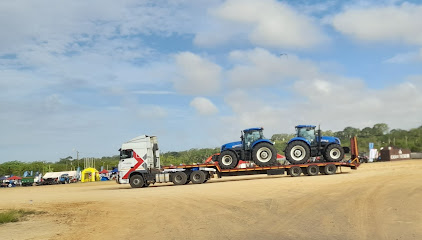
Vista Mussulo
Discover the breathtaking beauty of Vista Mussulo, a serene coastal retreat in Belas, Angola, perfect for relaxation and adventure.

Distrito Vila Verde
Discover the natural beauty and vibrant culture of Distrito Vila Verde, a hidden gem in Belas perfect for nature lovers and cultural enthusiasts.
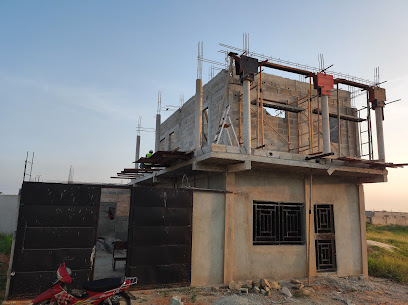
Essential places to dine
Restaurante Café Del Mar
Experience exquisite seafood and stunning ocean views at Restaurante Café Del Mar on Ilha de Luanda.
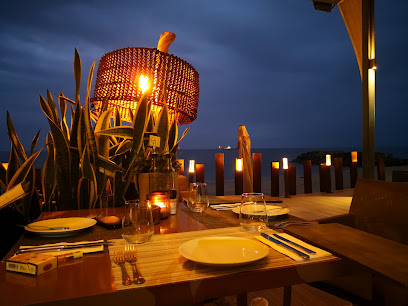
Miami Beach
Discover the culinary delights of Miami Beach in Luanda—where local flavors meet vibrant nightlife in an unforgettable dining experience.
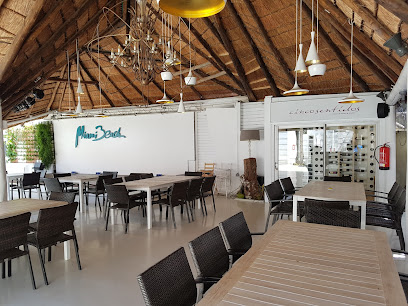
Restaurante Embarcad'ouro
Experience the rich flavors of Angola at Restaurante Embarcad'ouro – where culinary excellence meets cultural tradition.
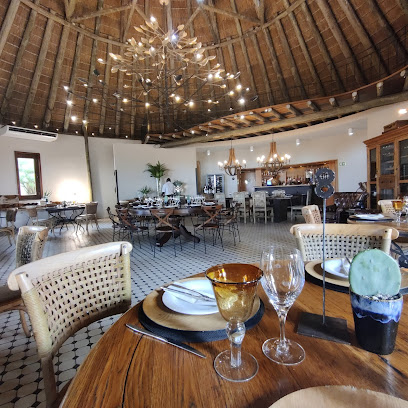
Moon Restaurante-Lounge
Experience the fusion of Angolan flavors and international cuisine at Moon Restaurante-Lounge in Luanda.
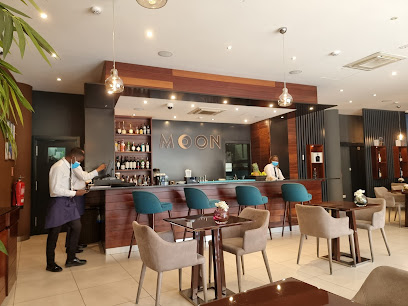
Restaurante O Naval
Experience authentic Angolan cuisine at Restaurante O Naval, where delightful flavors meet stunning views in the heart of Luanda.
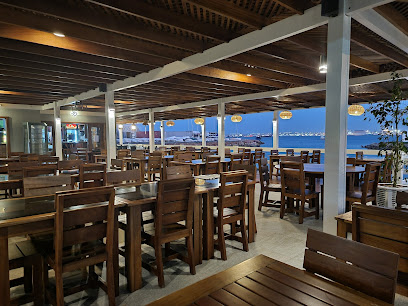
Restaurante Bico do Sapato
Experience authentic Angolan cuisine at Restaurante Bico do Sapato, nestled in Luanda's Estádio dos Coqueiros, where tradition meets taste.
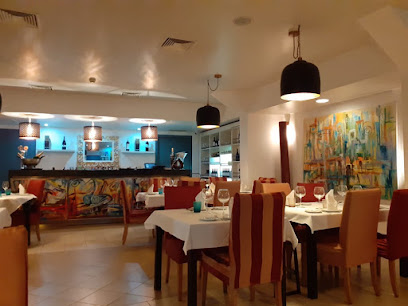
Nikki's House Restaurant
Experience authentic Angolan flavors at Nikki's House Restaurant in Luanda - a culinary delight with exceptional service and a warm atmosphere.
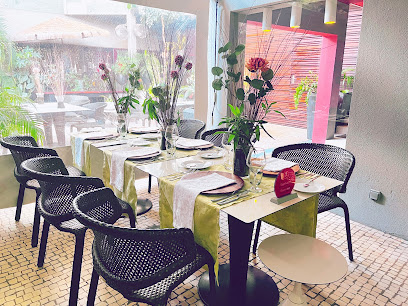
Kanawa Restaurant
Savor authentic Angolan cuisine at Kanawa Restaurant in Belas – a delightful culinary experience amidst vibrant culture.
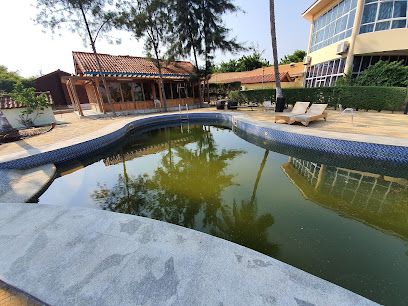
Essential bars & hidden hideouts
The ONE (Restaurante Bar-Kilamba, H5)
Experience the vibrant flavors of Belas at The ONE, a premier bar and restaurant offering a delightful fusion of local and international cuisine.
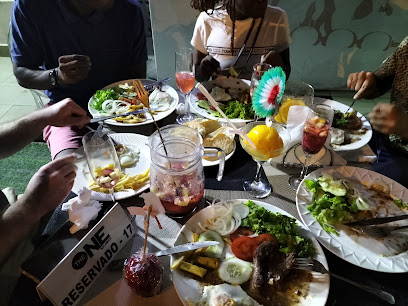
4 Gajos London Pub
Discover the lively atmosphere of 4 Gajos London Pub, a vibrant bar in Kilamba that offers local drinks, great entertainment, and a friendly ambiance.
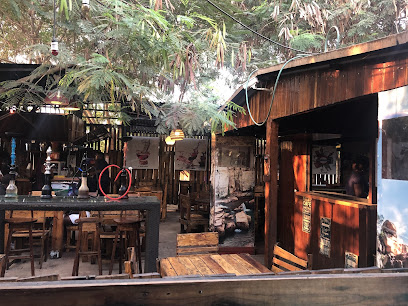
O Bar do Amigo
Experience the vibrant karaoke culture at O Bar do Amigo in Luanda - where every night is a celebration of song and friendship.

MAMIGUEL
Experience the vibrant nightlife at MAMIGUEL, a lively bar in Zango IV, offering a unique blend of local culture and delicious drinks.
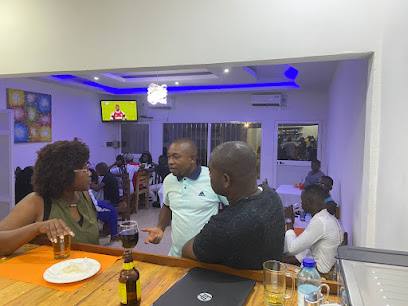
Kazerna23
Discover the vibrant nightlife of Luanda at Kazerna23, a bar that offers a taste of local culture and a delightful selection of drinks.
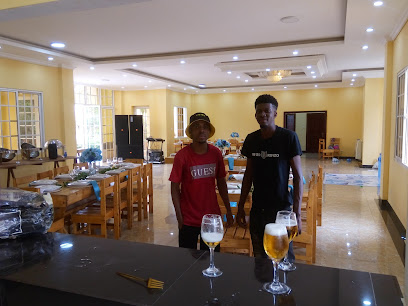
Cidadão Comum Bar
Discover the vibrant nightlife of Luanda at Cidadão Comum Bar, where local culture and lively atmosphere blend perfectly.

MUSSULO DO ZANGO
Experience the lively nightlife and cultural essence of Angola at Mussulo do Zango, Luanda's premier bar for locals and tourists.
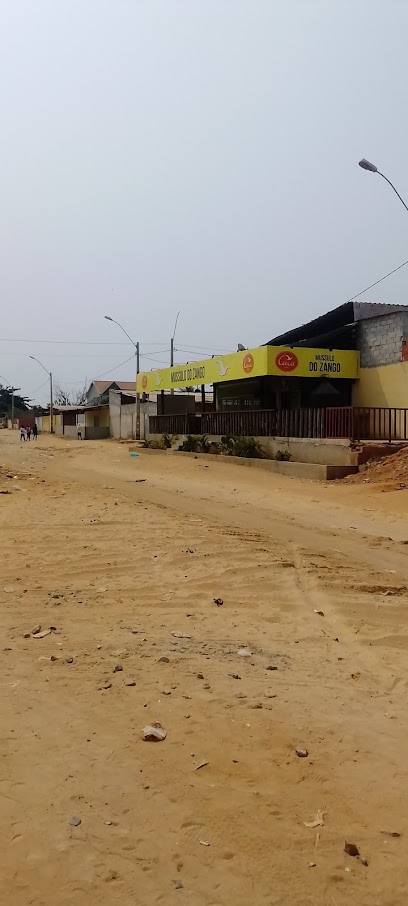
LISBOA .0 Bar Longe e Hospedaria
Experience the vibrant culture and nightlife of Luanda at LISBOA .0 Bar Longe e Hospedaria, where great drinks and local music await.

Tempero Agressivo(Restaurante & Bar)
Discover vibrant Angolan cuisine and a lively atmosphere at Tempero Agressivo, Luanda's go-to restaurant and bar for an authentic dining experience.

QPOINT Lounge
Discover the vibrant nightlife of Caboledo at QPOINT Lounge, where delicious drinks and a lively atmosphere await every visitor.

Sea Cool
Dive into the lively atmosphere of Sea Cool, a premier girl bar in Zango IV, offering exquisite drinks and unforgettable entertainment for all.
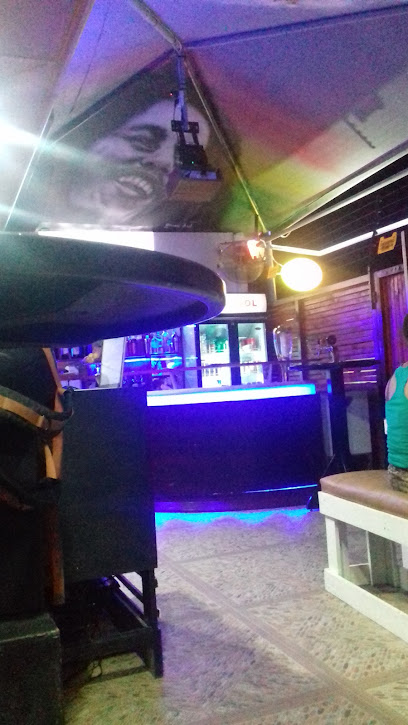
Snack-bar & Grill Offshore
Discover the vibrant atmosphere and local flavors at Snack-bar & Grill Offshore in Muxima, Angola, your perfect dining retreat.

Bar Zema
Experience the vibrant nightlife of ZangoIII at Bar Zema, where local culture meets an inviting atmosphere and delightful drinks.

Bar Boteco
Experience the vibrant nightlife of Luanda at Bar Boteco, a lively pub with delicious drinks and a welcoming atmosphere.

Kubata Bar & Lounge
Discover the vibrant atmosphere of Kubata Bar & Lounge in ZangoIII, where local drinks and lively entertainment await you.

Local Phrases about Kissama National Park
-
- HelloOlá
[oh-LAH] - GoodbyeAdeus
[ah-DAY-oosh] - YesSim
[seem] - NoNão
[NAH-oo] - Please/You're welcomePor favor
[pohr fah-VOHR] - Thank youObrigado/Obrigada
[oh-bree-GAH-doo/oh-bree-GAH-dah] - Excuse me/SorryCom licença/Desculpe
[kohm lee-SEN-sah/dehs-KOOL-peh] - How are you?Como está?
[KOH-moo ehs-TAH] - Fine. And you?Bem. E você?
[behn/eh voh-SEHN] - Do you speak English?Fala inglês?
[FAH-lah een-GLEHS] - I don't understandNão entendo
[NAH-oo ehn-TEN-doo]
- HelloOlá
-
- I'd like to see the menu, pleaseGostaria de ver o menu, por favor
[goh-stah-REE-ah deh vehr ooh MEH-noo, poor fah-VOHR] - I don't eat meatNão como carne
[NAH-oo KOH-moo KAR-neh] - Cheers!Saúde!
[SAH-oo-deh] - I would like to pay, pleaseGostaria de pagar, por favor
[goh-stah-REE-ah deh pah-GAHR, poor fah-VOHR]
- I'd like to see the menu, pleaseGostaria de ver o menu, por favor
-
- Help!Ajuda!
[ah-JOO-dah] - Go away!Vai embora!
[vah-ee ehm-BOH-rah] - Call the Police!Chamar a Polícia!
[shah-MAHR ah poh-LEE-see-ah] - Call a doctor!Chamar um médico!
[shah-MAHR oom MEH-dee-koo] - I'm lostEstou perdido
[ehs-TOH pehr-DEE-doo] - I'm illEstou doente
[ehs-TOH doo-EHN-teh]
- Help!Ajuda!
-
- I'd like to buy...Gostaria de comprar...
[goh-stah-REE-ah deh kohm-PRAR] - I'm just lookingEstou só a ver
[ehs-TOH soh ah vehr] - How much is it?Quanto custa?
[KWAHN-too KOOS-tah] - That's too expensiveIsso é muito caro
[EE-soo eh MWEEN-too KAH-roo] - Can you lower the price?Pode baixar o preço?
[POH-deh BAHY-shahr oo PREH-soo]
- I'd like to buy...Gostaria de comprar...
-
- What time is it?Que horas são?
[keh OH-rahz sah-oo] - It's one o'clockÉ uma hora
[eh OO-mah OH-rah] - Half past (10)Dez e meia
[dehz eh MAY-ah] - MorningManhã
[mah-NYAH] - AfternoonTarde
[TAHR-deh] - EveningNoite
[NWAH-teh] - YesterdayOntem
[ohn-TEHM] - TodayHoje
[OH-zheh] - TomorrowAmanhã
[ah-mah-NYAH] - 1Um
[oom] - 2Dois
[doh-ees] - 3Três
[trehs] - 4Quatro
[KWAH-troo] - 5Cinco
[SEEN-koo] - 6Seis
[saysh] - 7Sete
[SEH-teh] - 8Oito
[OY-too] - 9Nove
[NOH-veh] - 10Dez
[dehz]
- What time is it?Que horas são?
-
- Where's a/the...?Onde está o/a...?
[OHN-deh ehs-TAH ooh/ah] - What's the address?Qual é o endereço?
[kahl eh ooh ehn-DREH-soo] - Can you show me (on the map)?Pode me mostrar (no mapa)?
[POH-deh meh mohs-TRAHR (noo MAH-pah)] - When's the next (bus)?Quando é o próximo (autocarro)?
[KWAHN-doo eh ooh PROH-kshee-moo (ow-toh-KAHR-roo)] - A ticket (to ....)Um bilhete (para ...)
[oom bee-LYE-teh (PAH-rah)]
- Where's a/the...?Onde está o/a...?
History of Kissama National Park
-
Kissama National Park, also known as Quiçama National Park, was established in 1938 during the Portuguese colonial rule in Angola. Originally designated as a game reserve, the park spans over 9,600 square kilometers. The park's creation aimed to protect the region's rich biodiversity and lush landscapes, which include savannas, mangroves, and dense forests.
-
After Angola gained independence from Portugal in 1975, Kissama National Park experienced significant challenges. The ensuing civil war, which lasted until 2002, led to widespread poaching and habitat destruction. Many species, including elephants, faced the brink of extinction due to the lack of effective management and enforcement during this period.
-
In 2000, a monumental conservation effort called 'Operation Noah's Ark' was launched to repopulate Kissama National Park with wildlife. This initiative, spearheaded by the Kissama Foundation, involved translocating animals from neighboring countries such as Botswana and South Africa. Elephants, giraffes, and other large mammals were reintroduced to re-establish the park's ecological balance and restore its former glory.
-
The Kissama Foundation, established in the late 1990s, has played a pivotal role in the park's conservation and rehabilitation. The foundation's efforts include anti-poaching measures, community outreach programs, and sustainable tourism development. Their work has significantly contributed to the park's recovery, promoting environmental education and fostering a sense of stewardship among local communities.
-
Kissama National Park holds cultural importance for the local communities that reside in and around its boundaries. The park's landscapes and wildlife are deeply intertwined with the traditions and livelihoods of the indigenous people. Various ethnic groups, such as the Kimbundu, have historically depended on the land for hunting, fishing, and agriculture, making the park a vital part of their cultural heritage.
Kissama National Park Essentials
-
Kissama National Park is located approximately 70 kilometers south of Luanda, Angola's capital. The most convenient way to get there is by car. You can rent a car in Luanda and drive to the park; the journey takes around 1.5 to 2 hours. Alternatively, you can hire a taxi or arrange for a guided tour that includes transportation. There are no direct public transportation options to the park, so private transportation or a tour is the best option.
-
Once inside Kissama National Park, the best way to explore is by 4x4 vehicle due to the rough terrain. Guided safari tours are available and are highly recommended for both safety and educational purposes. Walking safaris are also an option but should only be done with an experienced guide. There are no public transportation options within the park, so arranging for a guided tour or renting a suitable vehicle is essential.
-
The official currency of Angola is the Angolan Kwanza (AOA). Credit cards are not widely accepted, especially in rural areas and within the park itself. It's advisable to carry sufficient cash for your trip. ATMs are available in Luanda, but it is recommended to withdraw enough cash before heading to the park. Make sure to have smaller denominations for easier transactions.
-
Kissama National Park is generally safe for tourists, but standard precautions should be taken. Avoid venturing into the park alone, especially at night. Always travel with a guide or in a group. Be cautious of wildlife and follow the guidelines provided by your guide. As for Luanda, certain neighborhoods have higher crime rates, particularly for pickpocketing and petty theft targeting tourists. Avoid walking alone at night in unfamiliar areas and keep your belongings secure.
-
In case of an emergency, dial 113 for police assistance or 112 for medical emergencies. It is advisable to have travel insurance that covers medical emergencies. The nearest medical facilities are in Luanda, so it is crucial to carry a basic first-aid kit. Guided tours often have emergency protocols in place, so make sure to inquire about these when booking your tour.
-
Fashion: Do wear lightweight, breathable clothing and sturdy shoes. Avoid wearing flashy jewelry or revealing clothing. Religion: Do respect local customs and traditions. While there are no specific religious sites within the park, general respect towards local culture is appreciated. Public Transport: There is no public transport within the park. If using public transport in Luanda, do be cautious and keep an eye on your belongings. Greetings: Do greet people with a handshake and a friendly smile. Eating & Drinking: Do try local dishes and accept food offerings graciously. Don't drink tap water; always opt for bottled water.
-
To experience Kissama National Park like a local, consider visiting the park early in the morning when wildlife is most active. Engage with local guides who can share insights about the park's flora and fauna. Bird-watching is a popular activity, so bring binoculars. Don't miss the chance to take a boat ride on the Kwanza River for a different perspective of the park. Lastly, respect the natural environment by not littering and following the park's guidelines.





